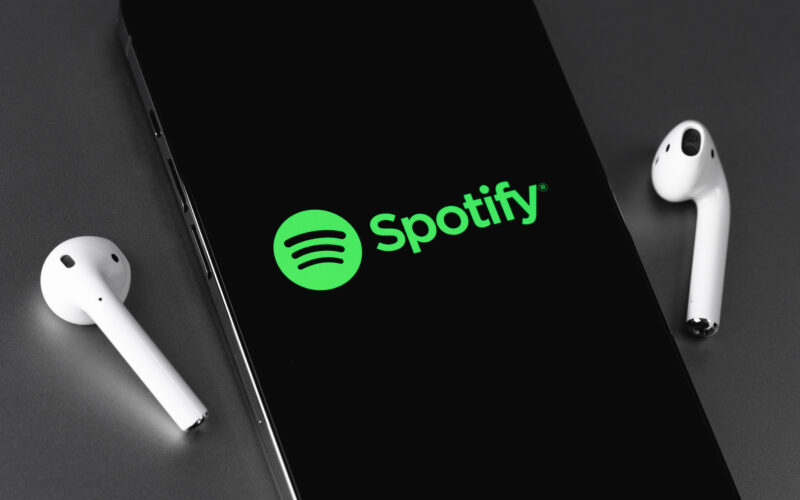Mastering Spotify Ads Manager: A Comprehensive Guide for Effective Campaign Management
Spotify Ads Manager is a powerful tool for reaching a highly engaged audience through audio advertising. This guide delves into the intricacies of the platform, providing a step-by-step approach to creating, managing, and optimizing successful Spotify ad campaigns.
Understanding the Spotify Ads Platform
- Targeting Options: Spotify offers granular targeting capabilities, allowing advertisers to reach specific demographics, listening habits, and even contextual moments within a user’s listening experience. This includes options like:
- Demographic Targeting (age, gender, location)
- Audio Context Targeting (genre preferences, podcast consumption)
- Behavioral Targeting (listening habits, app usage)
- Custom Audience Targeting (using first-party data for more precise targeting)
- Ad Formats: Spotify supports various ad formats, each offering unique strengths:
- Audio Ads: Traditional audio advertisements that play between songs or podcasts.
- Video Ads: Visually engaging ads that appear within the Spotify app (availability varies by region).
- Sponsored Sessions: Takeovers of a user’s listening experience, often themed around specific events or genres.
- Campaign Structure: Understanding the hierarchical structure of campaigns, ad groups, and ads is crucial for effective organization and reporting. A well-defined structure allows for better performance tracking and optimization.
- Campaigns: The overarching umbrella for your advertising efforts, allowing for budget allocation and overall campaign goals.
- Ad Groups: Groups of ads sharing similar targeting parameters and creative assets. This allows for A/B testing and refined targeting strategies.
- Ads: The individual audio or video creative assets displayed to users.
- Bidding Strategies: Spotify offers various bidding options to suit different campaign objectives:
- CPM (Cost Per Mille): You pay per 1000 impressions (views).
- CPC (Cost Per Click): You pay each time a user clicks on your ad.
- CPV (Cost Per View): You pay each time a user views your video ad.
- Automated Bidding: Spotify’s automated bidding system utilizes machine learning to optimize bids for the best possible results.
Creating a Successful Spotify Ad Campaign
- Defining Objectives: Clearly define your campaign goals. Are you aiming for brand awareness, lead generation, or driving app downloads? This will inform your targeting and bidding strategies.
- Target Audience Research: Conduct thorough research to understand your ideal customer’s listening habits, demographics, and preferences on Spotify. Leverage Spotify’s audience insights tools to refine your targeting.
- Creative Development: Craft compelling audio or video ads that resonate with your target audience. Keep the message concise, engaging, and aligned with your brand voice.
- Setting up Your Campaign in Ads Manager: Follow these steps to create your campaign within the Spotify Ads Manager platform:
- Create a New Campaign: Select the appropriate campaign objective (awareness, consideration, conversion).
- Define Budget and Schedule: Set a daily or lifetime budget and specify the campaign duration.
- Target Audience Selection: Utilize Spotify’s targeting options to reach your desired audience.
- Ad Group Creation: Organize your ads into logical ad groups based on targeting and creative variations.
- Ad Upload: Upload your audio or video ad creative.
- Bidding Strategy Selection: Choose a bidding strategy that aligns with your campaign goals.
- A/B Testing: Experiment with different ad creative, targeting parameters, and bidding strategies to identify what works best for your audience.
Monitoring and Optimizing Your Spotify Ad Campaigns
- Performance Tracking: Regularly monitor your campaign performance using Spotify’s reporting dashboards. Key metrics to track include:
- Impressions
- Clicks
- Click-Through Rate (CTR)
- Cost Per Click (CPC)
- Cost Per Mille (CPM)
- Conversion Rate (if applicable)
- Identifying Underperforming Ads: Analyze your campaign data to identify ads that are not meeting your performance goals. Pause or optimize underperforming ads.
- Adjusting Targeting: Refine your targeting parameters based on performance data. Exclude underperforming segments and focus on high-performing ones.
- Budget Allocation: Shift budget from underperforming ad groups to high-performing ones to maximize your return on investment (ROI).
- Iterative Optimization: Continuously monitor, analyze, and adjust your campaigns based on performance data. Treat campaign optimization as an ongoing process.
Advanced Strategies for Spotify Ads
- Utilizing First-Party Data: Integrate your own first-party data (customer lists, CRM data) to create custom audiences for more precise targeting.
- Retargeting: Reach users who have previously interacted with your brand or website through retargeting campaigns.
- Campaign Sequencing: Create a series of campaigns with different objectives and messaging to guide users through the marketing funnel.
- Attribution Modeling: Understand which touchpoints in your marketing strategy are most effective in driving conversions.
- Budget Forecasting and Planning: Develop a robust budget plan that aligns with your campaign goals and expected performance.
Troubleshooting Common Issues with Spotify Ads Manager
- Low Click-Through Rates: Analyze your ad creative and targeting to identify potential issues. Try A/B testing different ad variations.
- High Cost Per Click (CPC): Review your bidding strategy and targeting. Consider refining your targeting to reach a more relevant audience.
- Account Issues: Contact Spotify Ads support if you encounter any issues with your account or campaign setup.
- Understanding Reporting Metrics: Ensure you understand the various reporting metrics provided by Spotify Ads Manager to accurately assess campaign performance.
- Staying Updated on Platform Changes: Keep abreast of any changes or updates to the Spotify Ads Manager platform to ensure you are using the most effective strategies.
Conclusion
In short, Spotify Ads Manager provides a powerful platform for creating highly targeted and impactful advertising campaigns. With a user-friendly interface, powerful analytics, and the ability to engage highly specific target audiences, the platform empowers marketers to connect with listeners in meaningful ways.
By mastering the features and strategies outlined in this guide, businesses can optimize ad spend, increase brand visibility, and drive measurable results. As audio advertising continues to grow in influence, leveraging tools like Spotify Ads Manager positions brands to stay ahead of the curve in an increasingly competitive digital landscape, making every campaign a stepping stone to success.

